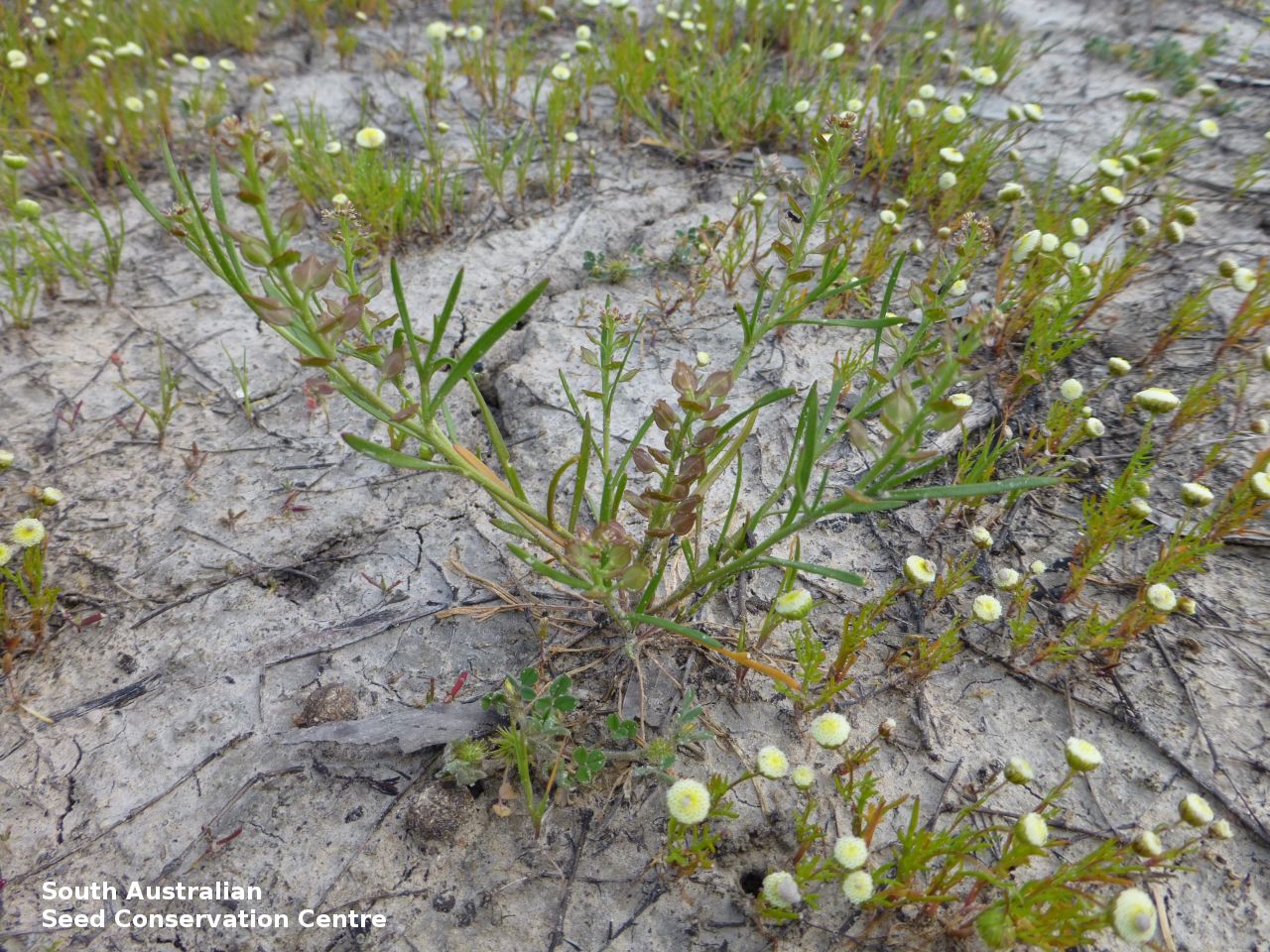
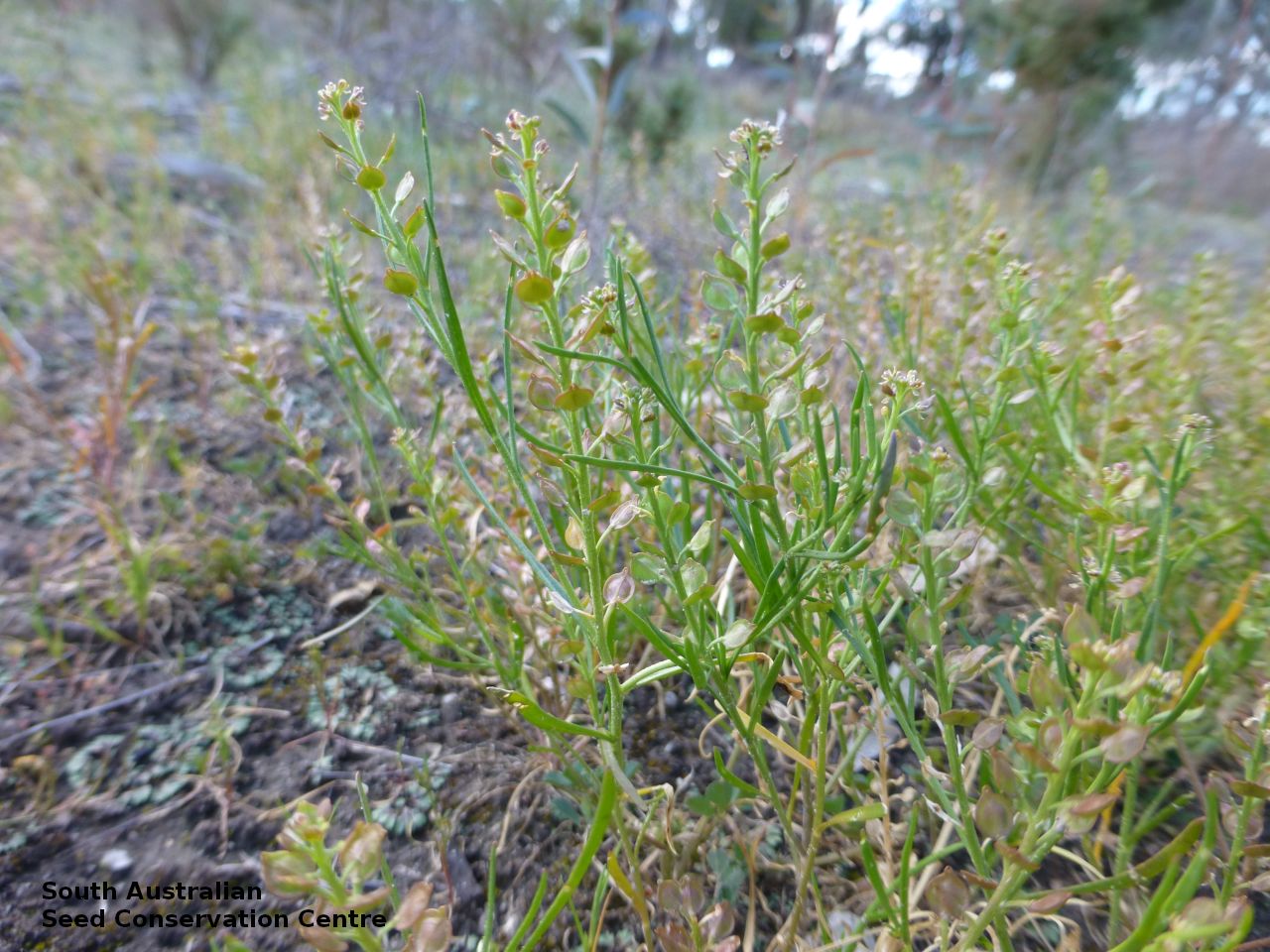
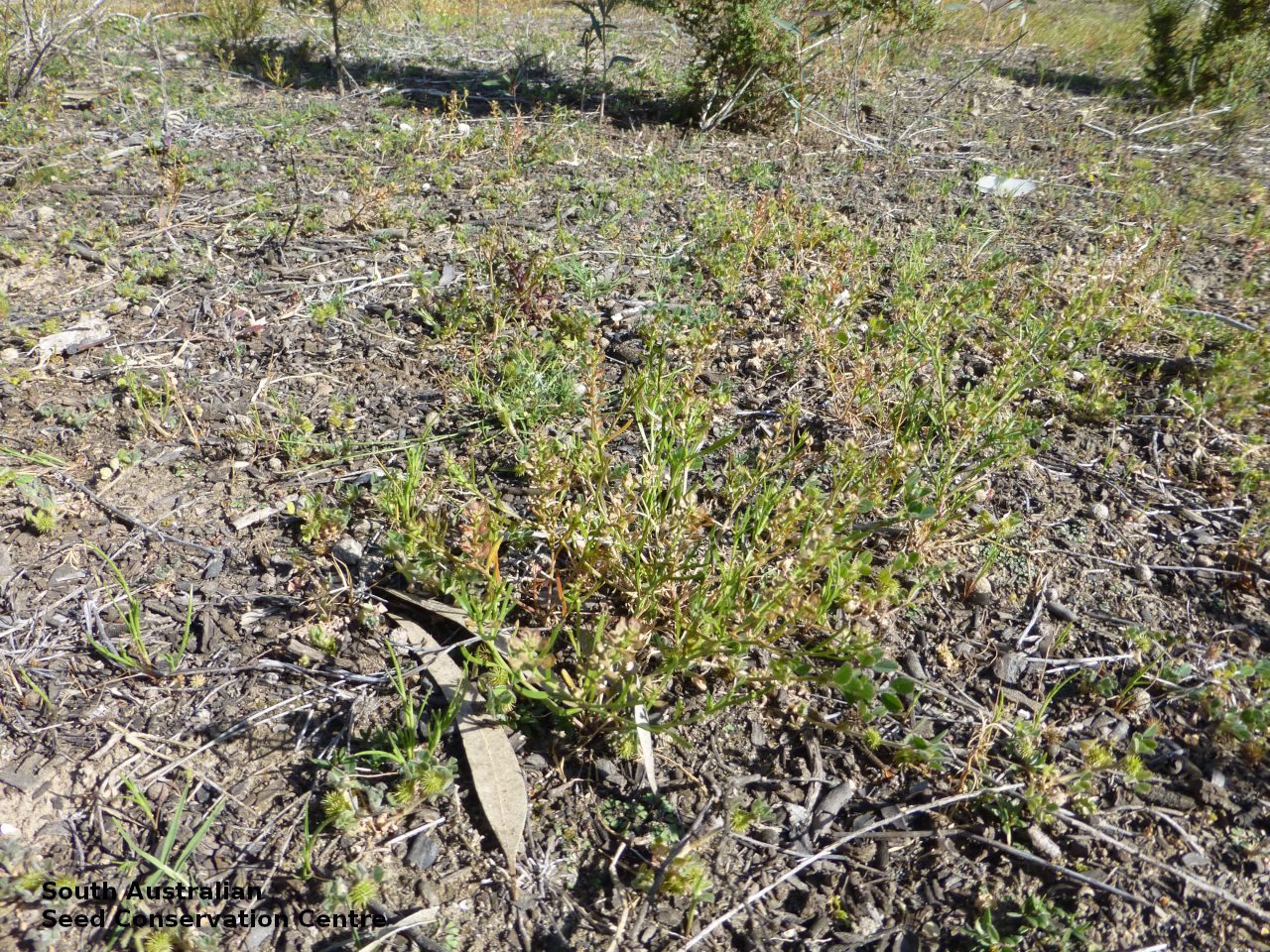
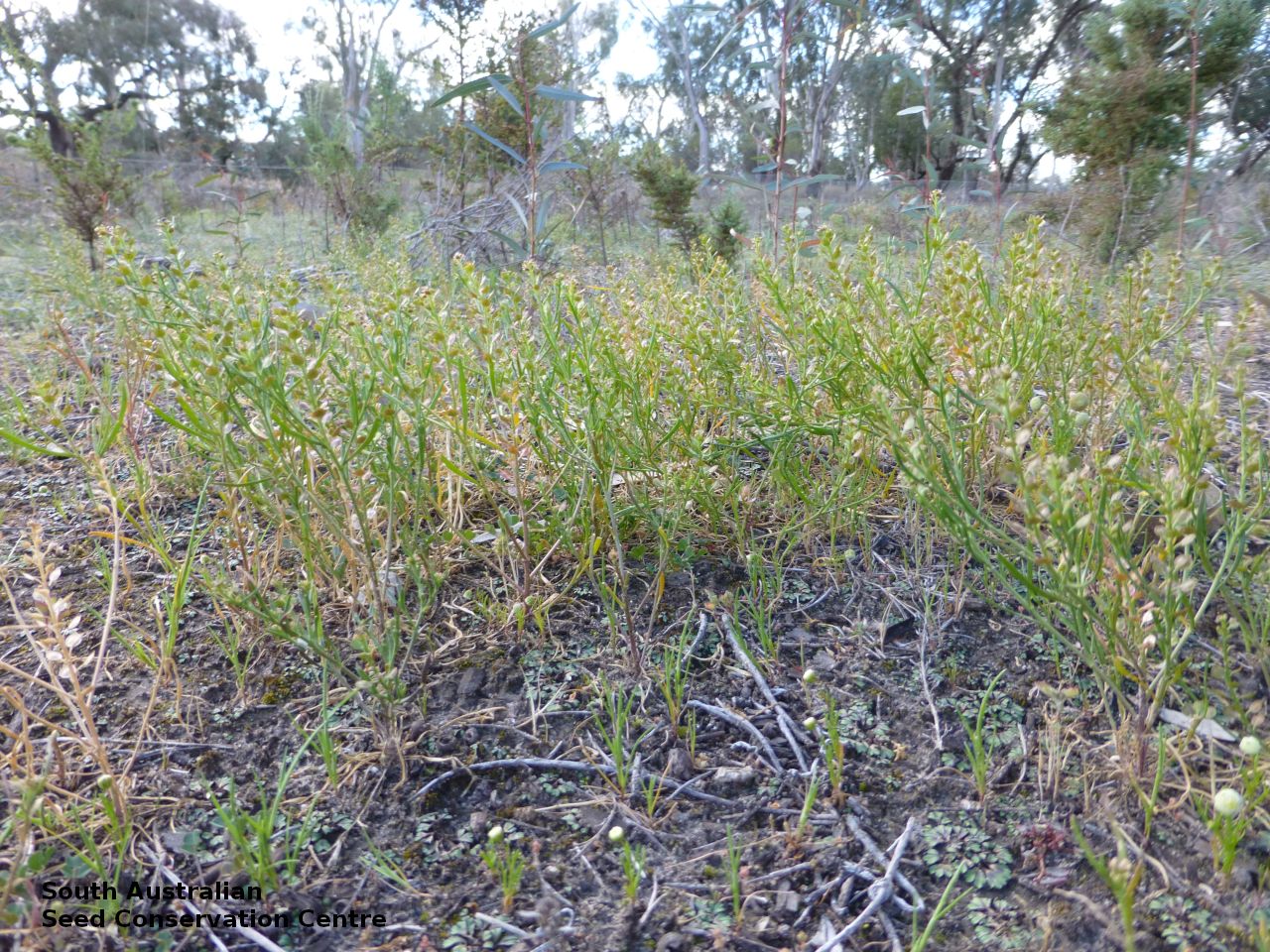
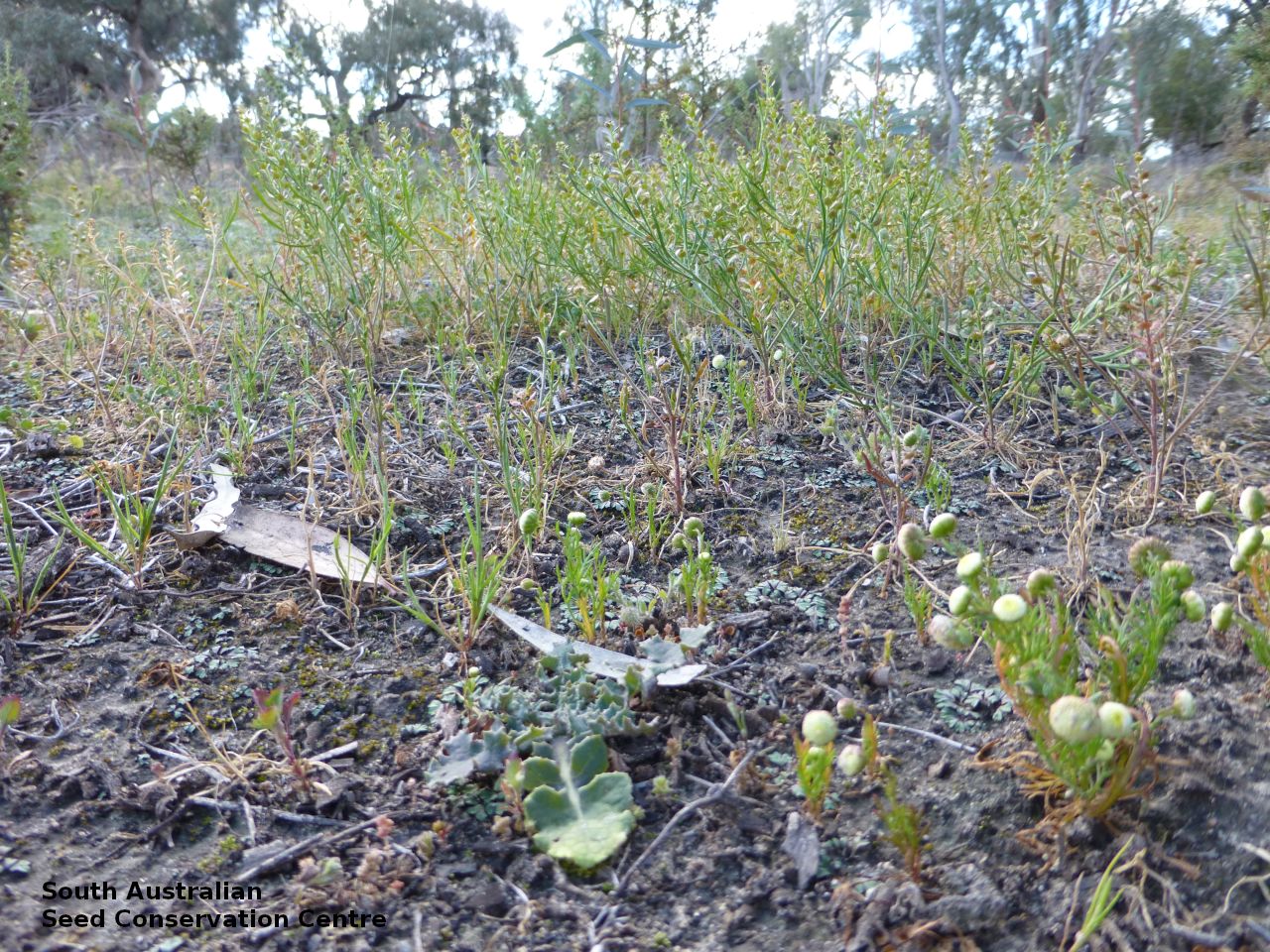
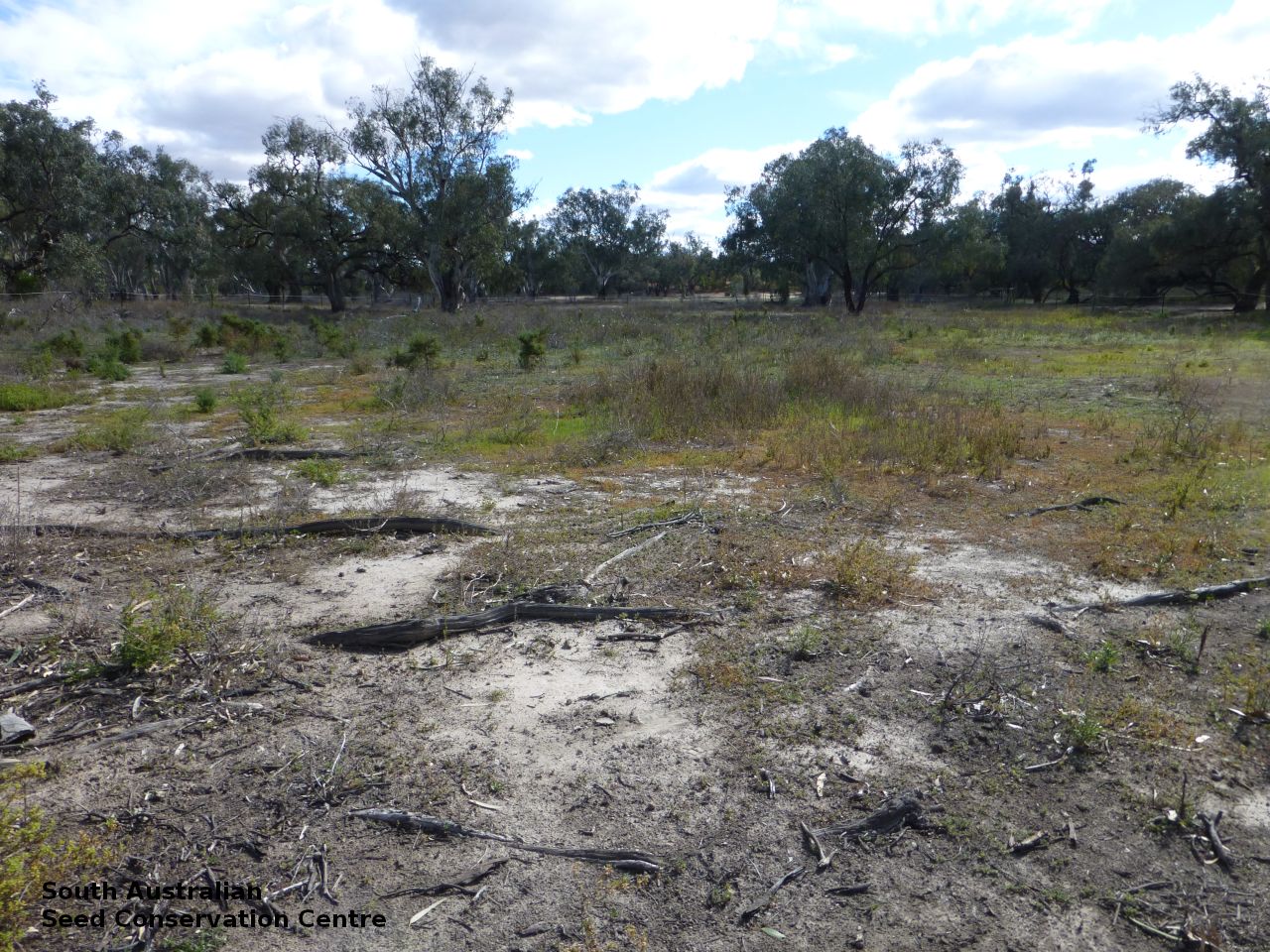
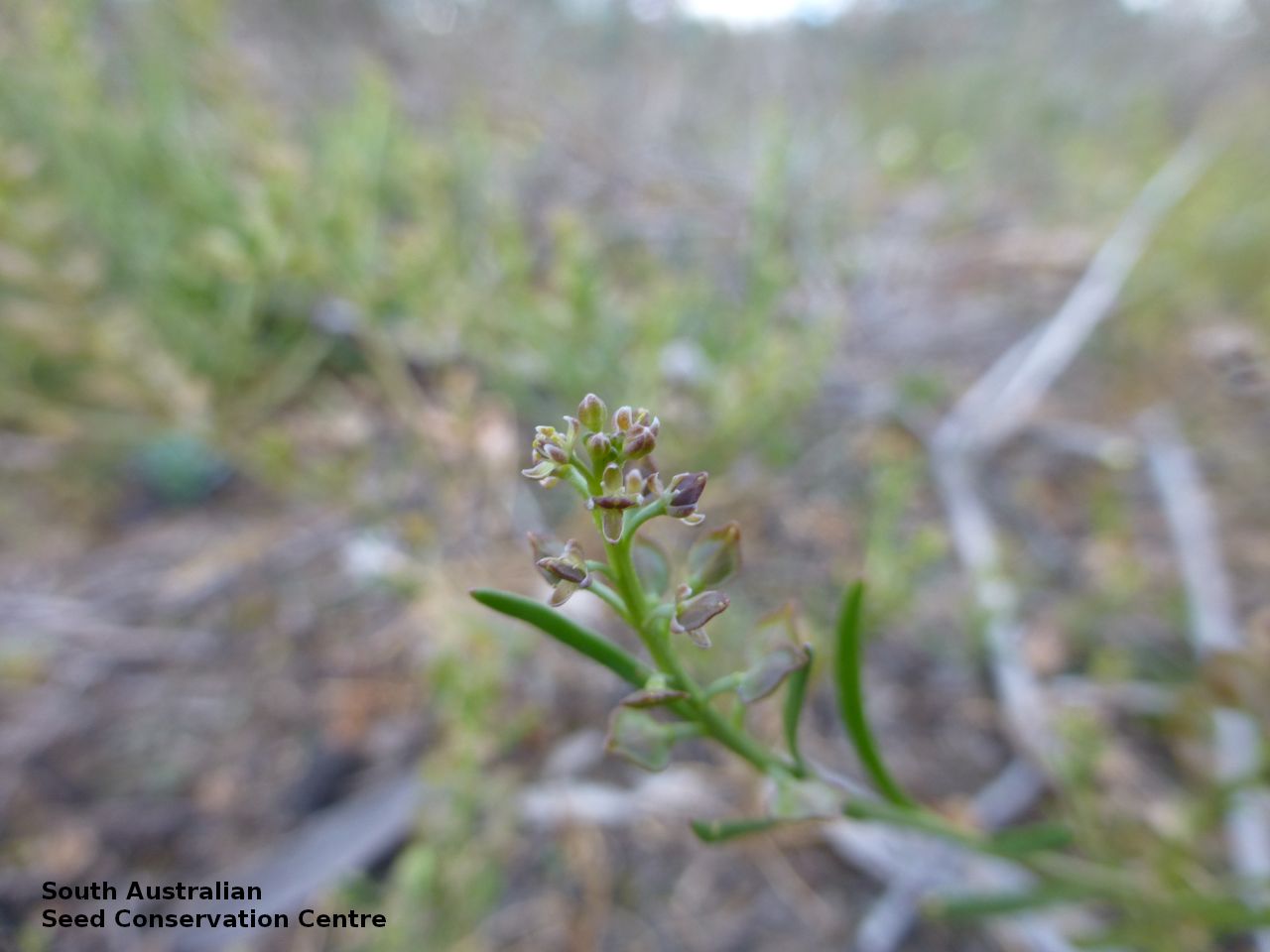
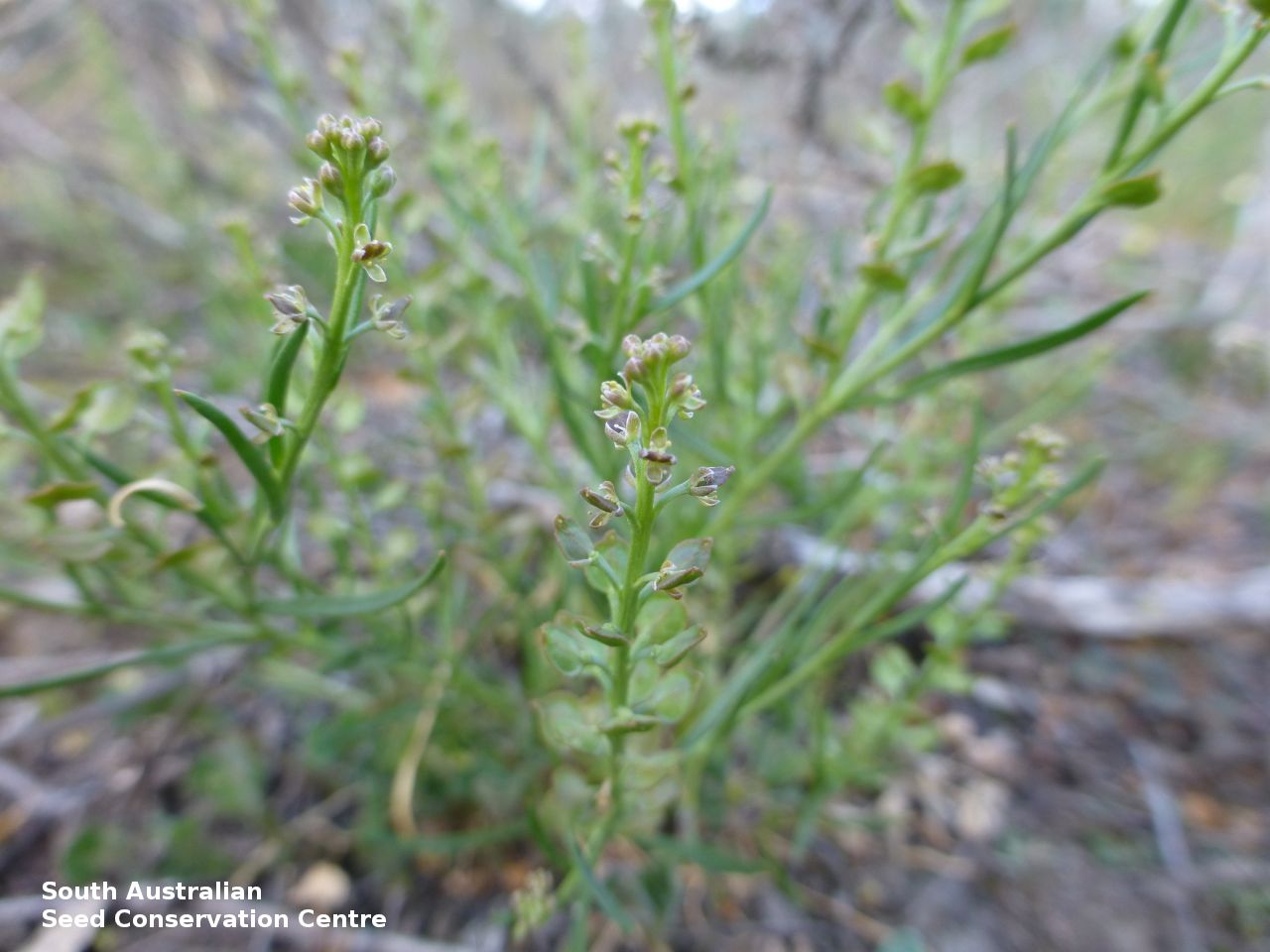
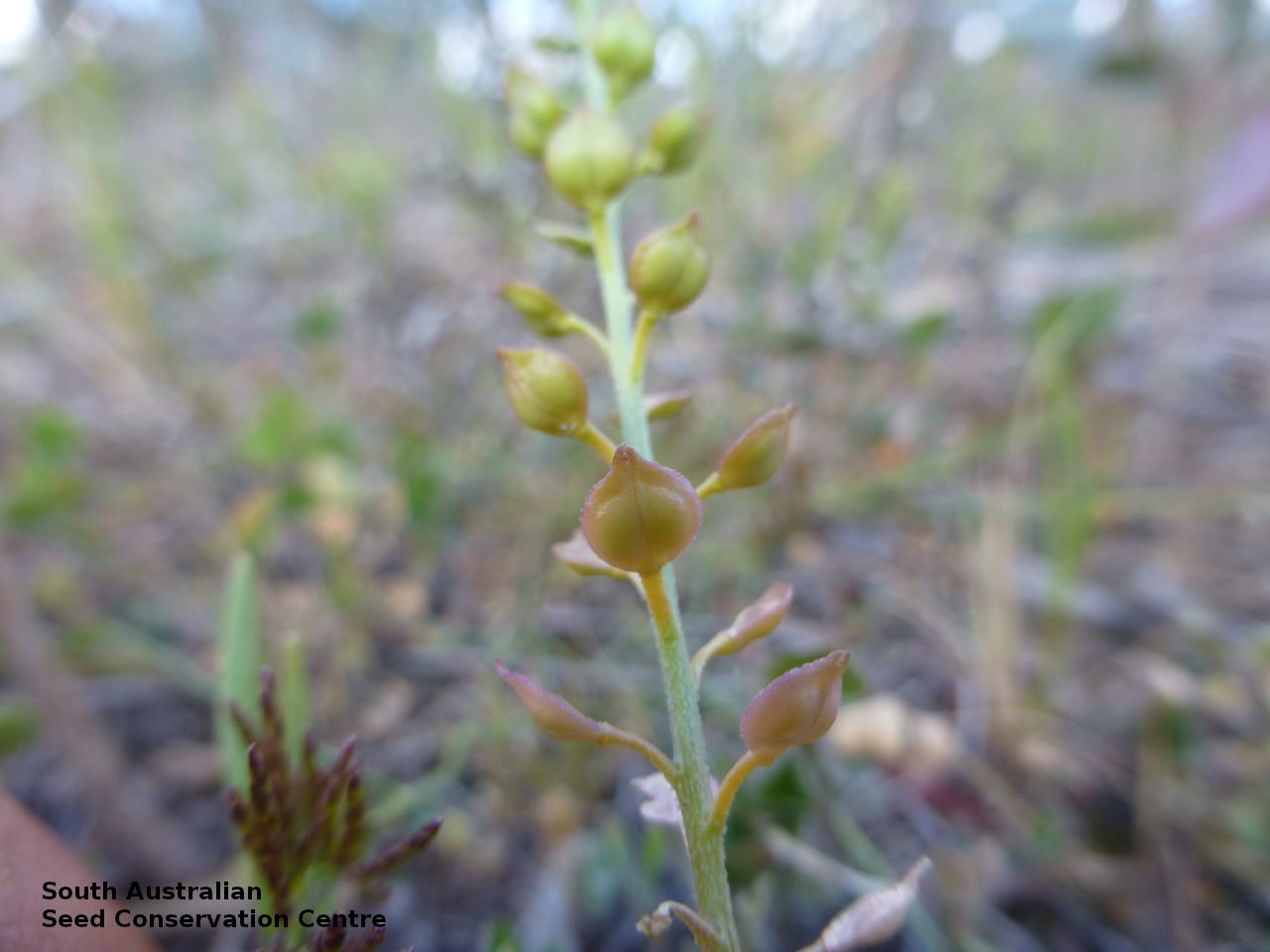
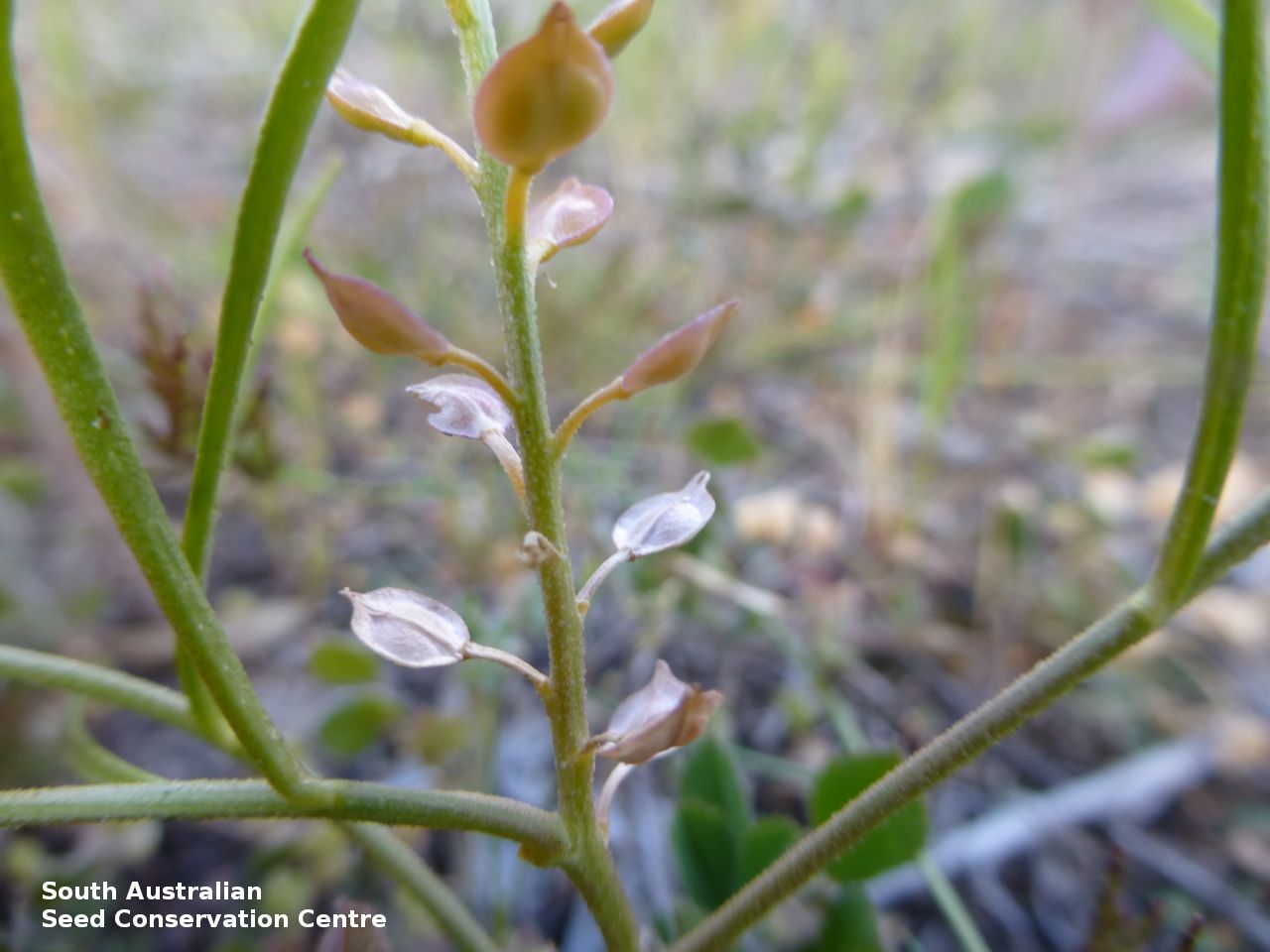
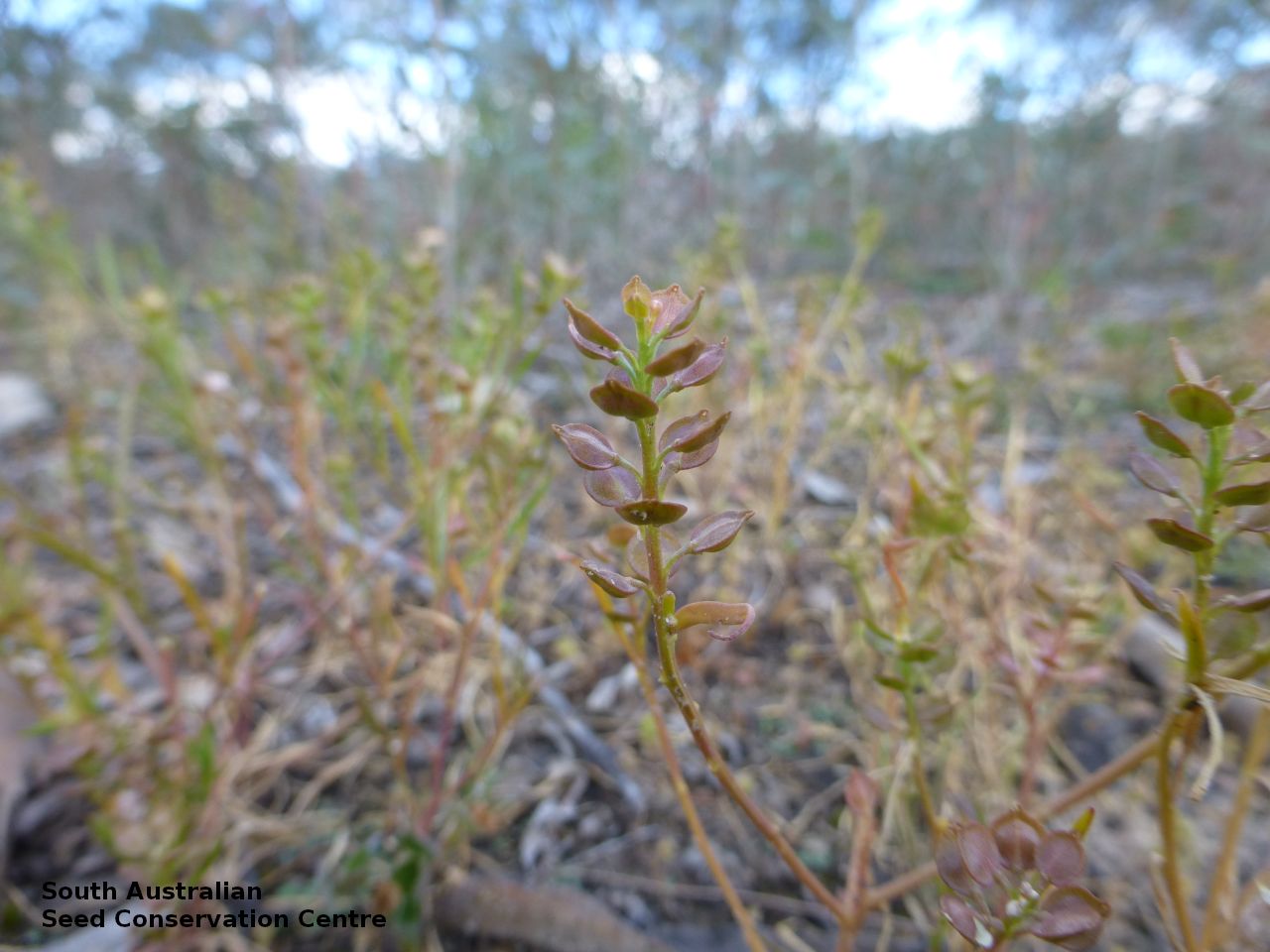
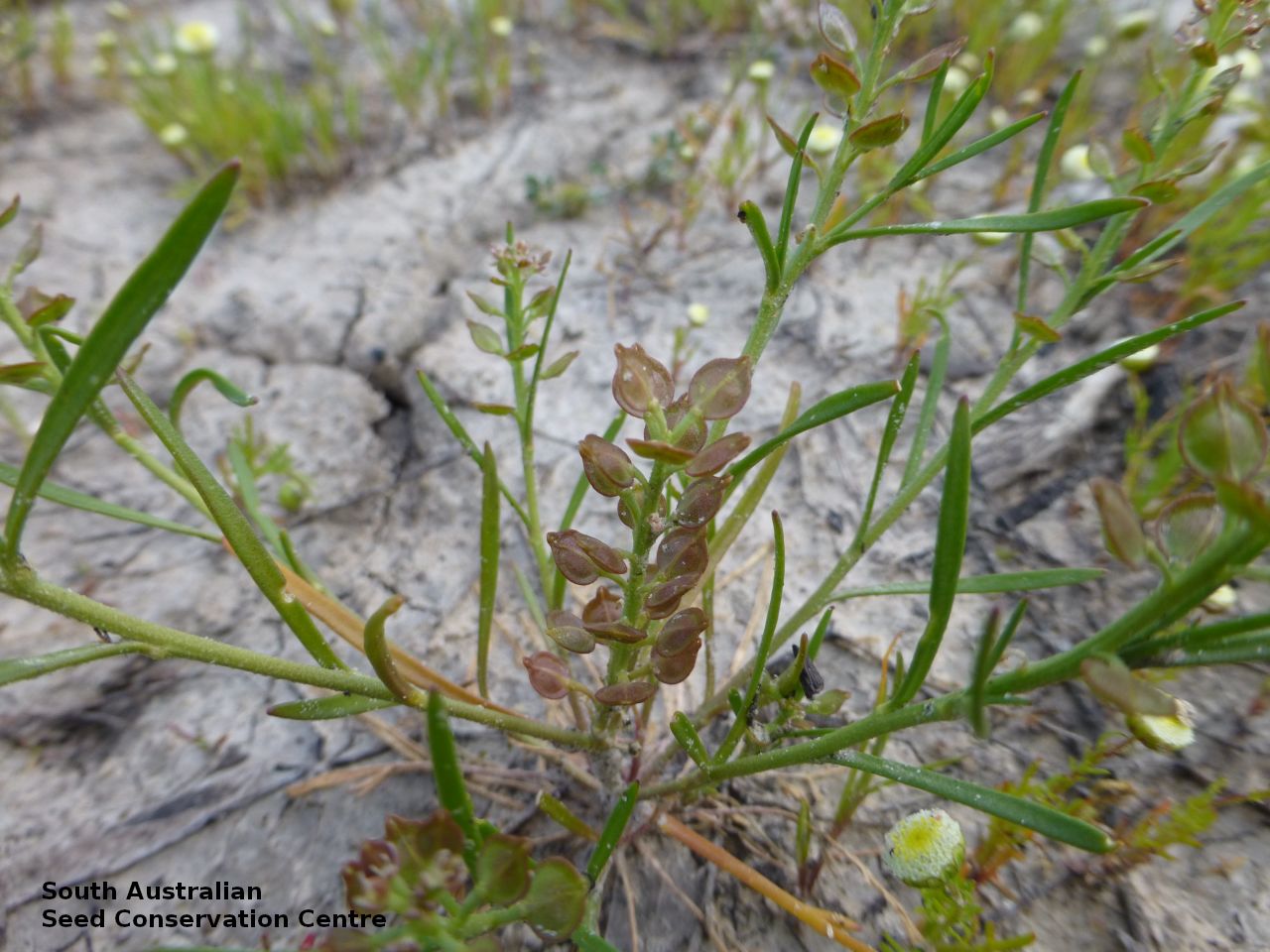


Botanical art
Prior names
Nasturtium monoplocoides
Etymology
Lepidium from the Greek 'lepis' meaning a scale; referring to the appearance of the fruits. Monoplocoides means resembling the genus Monoploca (from the Greek 'monos' meaning single and 'plokos' meaning folded), now a symonym of Lepidium.
Distribution and status
Only a single record from near Berri on the Murray River in 1915 and it has not been collected since in South Australia. It grows in open, sparsely vegetated sites in a range of habitats on heavy clay or clay-loam soils, usually on sites that are seasonally flooded or prone to waterlogging. Also found in Queensland, New South Wales and Victoria. Native. Presume extinct in South Australia. Presume extinct in Queensland. Rare in New South Wales and Victoria.
Herbarium region: Murray
NRM region: South Australian Murray-Darling Basin
AVH map: SA distribution map (external link)
Plant description
Small annual herb 20 cm tall. Leaves are narrowly linear, pinnate lobed or entire, to 10 cm long and 2 mm wide arranged along and at the base of stems. Inflorescence is an elongating spike with tiny green-brown flowers, petals inconspicuous or absent. Flowering between August and October. Fruits are brown broad-ovate to circular flat pod to 5.5 mm long and 4.5 mm wide, uniformly winged around the margin forming a deep narrow notch apex. Seed embryo type is bent.
Seed collection and propagation
Collect seeds between October and December. Collect maturing pods those turning pale brown with hard seeds inside. Be gentle with the pods as they split open easily. Place the pods in a tray and cover with paper to prevent seeds from popping out and leave to dry for a week. Then rub the dried pods gently by hand to dislodge the seeds. Use a sieve to separate the unwanted material. Store the seeds with a desiccant such as dried silica beads or dry rice, in an air tight container in a cool and dry place.